10 Ways To Help Your Blind or Visually Impaired Child Get Started With Origami
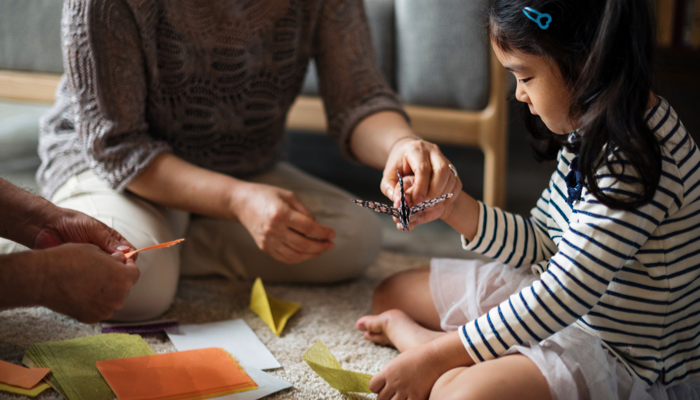
This post may contain affiliate links; please see our terms of use for details.
In a previous article, I shared ideas on how the art of origami can empower children in general and those with a visual impairment in particular.
Here, I am providing some tips for parents on introducing and getting started with this craft with their children who are blind or visually impaired.
1. Collect your supplies.
What do you need to start folding origami?
Paper… that’s it!
You can buy origami and different kinds of specialty paper online or from a craft or stationery shop near you, but you don’t have to. To get started, you can simply recycle the paper you already have around your house or office. Ordinary copy or printer paper actually works well for most origami models, but old magazines, pamphlets, braille paper, notebooks, exam pads, etc can be gathered as supplies.
Scissors and a tape measure or ruler will come in handy to measure and cut paper into squares or strips. Consider that paper with different textures will make folding much more fun and interesting. Choose bright colors with large patterns for children with some sight.
2. Designate a place to fold.
If possible, designate a cozy spot where you can fold with your child. Your origami supplies can be stored here.
Alternatively, create a folder or a bag with paper and a clipboard so you can do origami anywhere. Origami is a portable craft, so this might be a good idea in any case. Let your child take their origami bag with them on a car trip or to the doctor’s office to keep busy.
3. Find instructions or diagrams to follow.
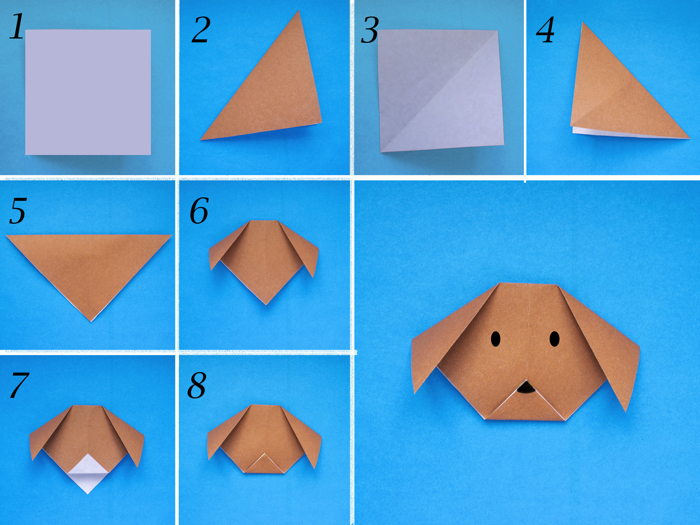
Many wonderful books have been written with the origami beginner in mind. Look for books that are aimed at children. The models should not only be easy to fold but also provide useful, decorative objects that the child will relate to and can play with.
Apart from books, sites like YouTube and Wikihow are rich sources for finding things to fold. Many sites that provide arts and crafts have their content in video format on YouTube, too. Searching on Google for phrases such as “easy origami for kids” should yield good results. Pinterest is another way to find ideas on origami you can try as well.
The Accessible Origami Project has text-only instructions that have been compiled for those who are unable to make use of visual instruction methods. So, if you are a blind parent or if your child is old enough to use their phone or computer to access the site, this is a wonderful opportunity to get started with origami as a hobby.
4. Start small and keep it simple.
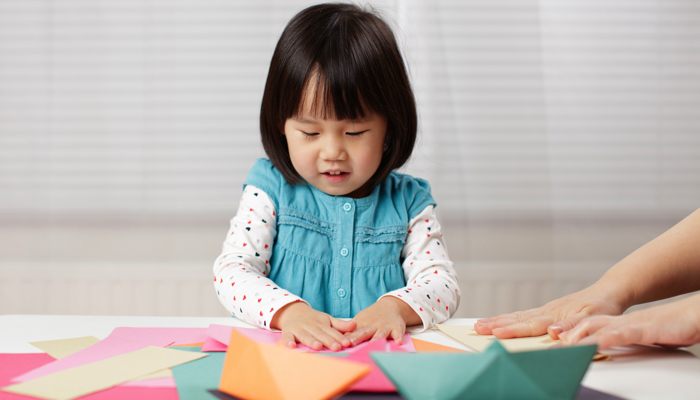
It is a good idea to start with easy models with only a few folds. Examples include the corner bookmark, the easy sailboat, the origami house, or the party hat. A model with eight steps or less is a good indication here. Medium-sized sheets of paper, like squares made from copy or construction paper, will be easier to work with for young children and beginners.
The page with summary instructions on Accessible Origami Project, which you can find here, is geared towards children and has fairly easy animals to fold.
5. Try folding models yourself before teaching others.
Fold the item yourself before introducing it to your child. You can even try folding with your eyes closed. This will give you an idea of how difficult the folds may be and the time it will take to complete.
6. Keep a record of what you’ve tried.
You can keep a list with instructions of all the models you have folded in braille, print, or electronic format. This will be a reminder of what you have folded in the past and will be there if your child wants to fold it again later. It sometimes happens that we forget how to fold certain models and it is lovely to be able to go back and remind ourselves with actual diagrams or instructions.
You can also keep the models you fold or photos of them with the instructions. Consider letting your child display finished models if they want to do so.
7. Have patience… with your child and yourself!
Make folding origami a weekly activity. Let your child sit with you while you are folding if they cannot fold themselves.
Be patient if your child is struggling or not interested. Either help by doing some or all of the folds for him, and do not force the activity if your child does not seem interested. You can always come back to origami in a few day’s time. Some children might like the craft immediately, while others may never pursue it as a hobby, but it is worth trying a few sessions to find out if this is something your child may like.
8. Use origami in everyday life.
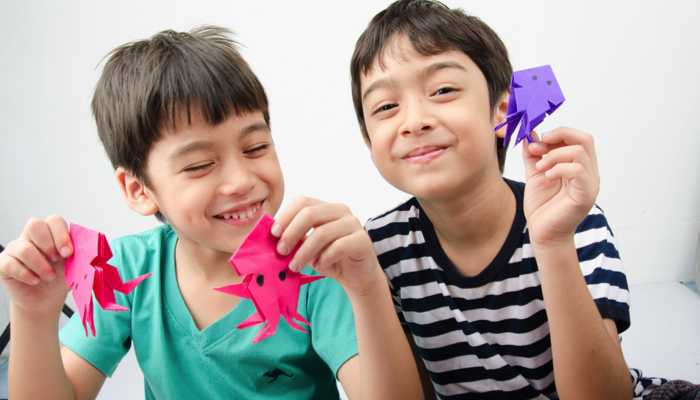
Fold origami models for special occasions like parties, Valentine’s Day, or Christmas. You can use folded boxes to organize at your office or within your home. Combine origami with other activities and crafts. Make cards with braille and origami on them or use flat origami to create a ‘picture’ on a page, which you can hang on a wall.
Unlike some crafts that are focused exclusively on visual elements, origami lends itself to inclusivity, so consider it a wonderful activity for siblings, where your blind child will not feel left out.
Similarly, origami can make a great party activity, and children can take their folded creation home as a party favor or a thank-you note.
9. Share your creations with friends and family.
Make and give away origami figures just because you can or to help others. Encourage your child to share origami with teachers and classmates. If you like teaching, consider teaching a group of children at a local library, church, or school.
You can also use origami as gifts for friends, family, and teachers or as part of fund-raising activities at your school or church.
10. Talk about origami and life.
Origami is as old as paper itself but is practiced worldwide today. Making different objects from paper provides a wonderful opportunity to talk about different cultures, animals, recycling, giving to others, sharing traditions, special days and what they represent, and so much more.
You might just find that origami may be a wonderful hobby that you and your child can pursue and enjoy together for many years to come.
Resources
For more information, you can contact me at accessorigami@gmail.com or visit accessorigami.com.
- happypuppytruffles: Origami YouTube tutorials explained clearly and in a fun way.
- EzOrigami: Dozens of how-to origami YouTube tutorials perfect for beginners and advanced folders.
- OrigamiSpirit: YouTube origami tutorials for adults that also fosters a sense of inner calm and play.
- Origami for Beginners: The Creative World of Paper Folding: A book of 36 easy projects for kids or adults by Florence Temko.
- Beginning Origami Kit: Nick Robinson’s book that includes 20 folding tutorials, 72 origami papers and a DVD.
- Ultimate Origami for Beginners Kit: Michael G. LaFosse and Richard L. Alexander provide 19 projects, 62 origami papers, and video instructions in this book.
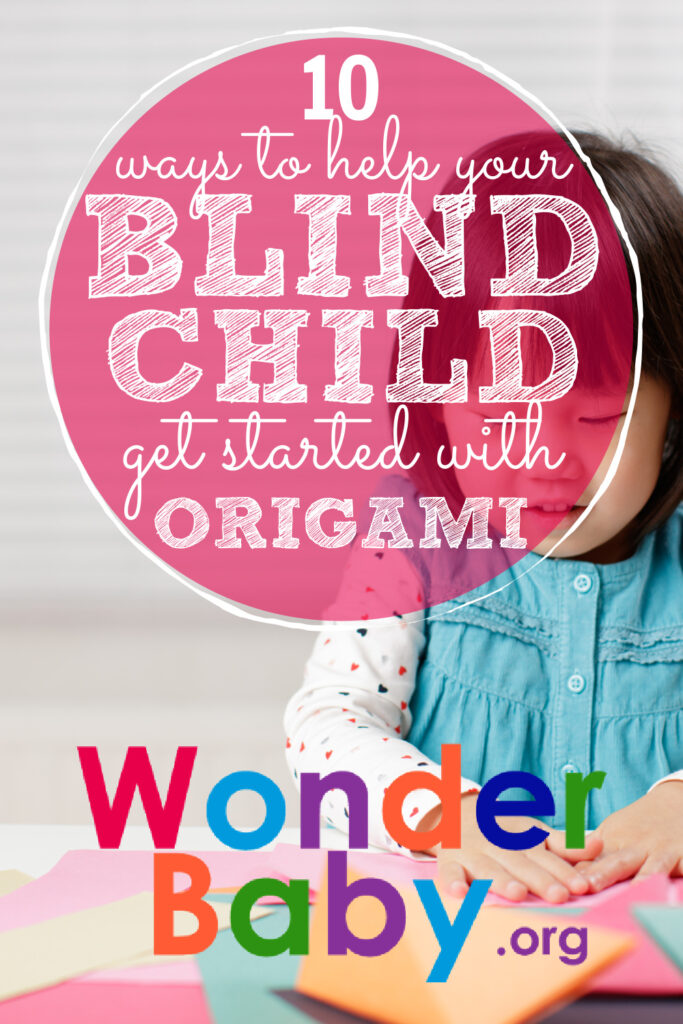
Related Posts

Eye Conditions and Syndromes, Visual Impairment
Neuralink Announces Plans to Restore Sight to the Blind with Brain Chip
Elon Musk’s company Neuralink has announced plans to begin human trials of its new “Blindsight” brain chip by the end of 2025.

Visual Impairment
The Gift of Understanding: How a Young Child Helps His Blind Father Navigate Life
When a parent is blind, it’s natural for people to wonder how their sighted child will adapt. Will they struggle to understand their parent’s needs? Will they feel burdened by...

Braille and Literacy, Toys, Visual Impairment
24 Braille Toys for Kids Who are Blind
Everything from alphabet blocks to raised line coloring pages and activity books to puzzles to card and board games... and so much more! And it's all in braille ready for...